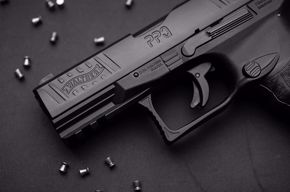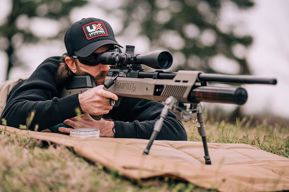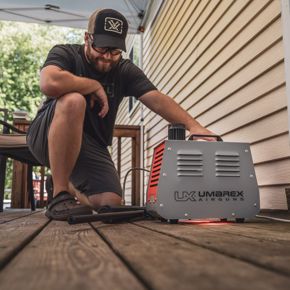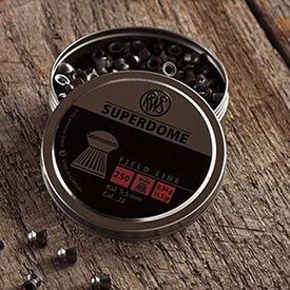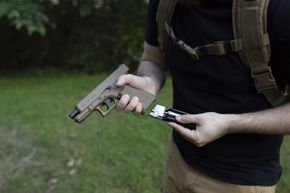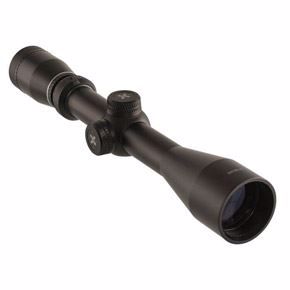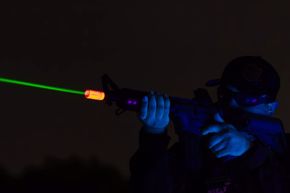In recent years, Pre-Charged Pneumatic (PCP) air rifles have become the gold standard for serious airgun shooters. Offering superior power, precision, and versatility, these advanced airguns are ideal for everything from target shooting to big-game hunting. In Part Four of the Airgun 411 series, we dive into the world of PCP air rifles—how they work, why they’re gaining popularity, what calibers and power levels are common, and the pros and cons of owning one.
What Is a PCP Air Rifle?
PCP (Pre-Charged Pneumatic) air rifles use highly compressed air stored in an onboard reservoir to propel pellets. The pressure inside these tanks typically ranges between 2,000 and 4,500 PSI, allowing for consistent shot-to-shot performance. Unlike spring-piston or CO₂ guns, PCP airguns deliver minimal recoil and are incredibly accurate, making them the top choice for precision shooters, hunters, and competitors.
Why Shooters Are Switching to PCP Air Rifles
1. Unmatched Accuracy and Consistency
PCP rifles provide consistent muzzle velocity across multiple shots, resulting in excellent accuracy at long ranges. The Umarex Gauntlet is a perfect example. Available in .22, .25, and .30 calibers, this regulated PCP rifle delivers impressive energy and shot counts ideal for extended shooting sessions.
2. High Power for Hunting
Thanks to their powerful design, PCP rifles are widely used for hunting small to medium game. With energy levels reaching 500+ foot-pounds, rifles like the Umarex Hammer (.50 caliber) offer ethical, lethal performance on larger game, such as wild hogs or coyotes.
3. Multi-Shot Capabilities
Unlike single-shot springers, many PCP rifles feature magazines that allow for rapid follow-up shots. This is critical for pest control, competition, or dynamic shooting scenarios.
4. Quiet Shooting
PCP rifles can be fitted with integrated moderators or suppressors, making them significantly quieter than powder-burning firearms. The Gauntlet SL2 in .22 or .25 Caliber and Origin PCP from Umarex come equipped with noise-dampening tech for quiet shooting.
Common Calibers and Power Ranges
PCP pellet rifles are available in a wide range of calibers to suit different shooting needs:
-
.177 Caliber: Best for target shooting and small pest control. Lower pellet weight but flatter trajectory.
-
.22 Caliber: A versatile choice for small game and higher energy shooting.
-
.25 Caliber: Delivers more stopping power for larger pests and hunting applications.
-
.30+ Calibers (.35, .45, .50): Designed for serious hunting. The Umarex Hammer .50 Cal is one of the most powerful production airguns available, ideal for big-game hunting.
Power ranges vary by caliber, but many PCPs deliver anywhere from 20 to over 700 foot-pounds of energy, depending on the model and projectile.
Types of Actions and Accessories
PCP rifles come with a variety of bolt, side-lever, and straight-pull actions. For example, the Umarex Origin uses a smooth side-lever action and is bundled with a high-pressure hand pump—a cost-effective entry into the PCP world.
Essential PCP accessories include:
-
Air Fill Devices: Hand pumps, scuba tanks, or high-pressure compressors.
-
Scopes: Most PCP rifles feature optics rails, making them ideal platforms for precision scopes.
-
Magazines: Multi-shot rotary magazines improve follow-up speed and convenience.
-
Bipods & Slings: For stability and mobility, especially during field use.
How Shooters Use PCP Air Rifles
-
Hunting: The rise of airgun hunting has led to legal allowances in many U.S. states for using PCP air rifles on everything from squirrels to deer. Organizations like the Airgun Hunting Legion promote ethical practices for airgun hunters.
-
Target Shooting: From field target competitions to benchrest shooting, PCP rifles dominate precision airgun sports.
-
Pest Control: Quiet and effective, PCP rifles are ideal for property and farm pest management.
Downsides of PCP Air Rifles
While PCP airguns offer superior performance, they come with a few caveats:
-
Higher Cost of Entry: PCP rifles, tanks, and compressors are more expensive than spring or CO₂-powered guns.
-
Air Supply Maintenance: Regular filling and tank care are required. Shooters need access to a compressor or SCUBA tank.
-
Complexity: More moving parts mean more maintenance and a steeper learning curve for beginners.
Conclusion
Pre-Charged Pneumatic air rifles represent the cutting edge of airgun technology. With power, precision, and versatility, PCP airguns like the Umarex Gauntlet 2, Zelos, and Hammer Carbine are transforming how enthusiasts approach hunting, target shooting, and competition. While they require a greater investment in equipment and knowledge, the performance payoff makes PCP rifles a worthy upgrade for any serious airgunner.

